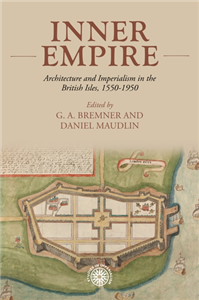Inner empire
Architecture and Imperialism in the British Isles, 1550-1950
by Daniel Maudlin, Alex Bremner
Description
More Information
Rights Information
Albania, Algeria, Angola, Argentina, Armenia, Australia, Austria, Bahrain, Belgium, Belize, Benin, Bolivia, Bosnia and Herzegovina, Botswana, Brazil, Bulgaria, Burkina Faso, Burundi, Cameroon, Canada, Cape Verde, Central African Republic, Chad, Chile, China, Colombia, Comoros, Congo [DRC], Congo, Republic of the, Costa Rica, Ivory Coast, Croatia, Czech Republic, Denmark, Djibouti, Ecuador, Egypt, El Salvador, Equatorial Guinea, Eritrea, Estonia, Ethiopia, Faroe Islands, Finland, France, French Guiana, Gabon, Gambia, Georgia, Germany, Ghana, Greece, Guatemala, Guinea, Guinea-Bissau, Guyana, Honduras, Hongkong, Hungary, Iceland, India, Indonesia, Iran, Iraq, Ireland, Israel, Italy, Japan, Jordan, Kazakhstan, Kenya, Kuwait, Latvia, Lebanon, Lesotho, Liberia, Libya, Lithuania, Luxembourg, Macau, China, Macedonia [FYROM], Madagascar, Malawi, Malaysia, Mali, Malta, Mauritania, Mauritius, Mayotte, Mexico, Mongolia, Montenegro, Morocco, Mozambique, Namibia, Netherlands, New Zealand, Nicaragua, Niger, Nigeria, Norway, Oman, Pakistan, Panama, Paraguay, Peru, Philippines, Poland, Portugal, Puerto Rico, Qatar, Reunion, Romania, Russia, Rwanda, Saint Helena, Sao Tome and Principe, Saudi Arabia, Senegal, Serbia, Seychelles, Sierra Leone, Singapore, Slovakia, Slovenia, Somalia, South Africa, South Korea, Spain, Sri Lanka, Sudan, Suriname, Swaziland, Sweden, Switzerland, Syria, Taiwan, Tanzania, Thailand, Timor-Leste, Togo, Tokelau, Tunisia, Turkey, Uganda, Ukraine, United Arab Emirates, United Kingdom, United States, Uruguay, Venezuela, Vietnam, Western Sahara, Yemen, Zambia, Zimbabwe, South Sudan, Cyprus, Palestine, Bangladesh, Cambodia, Liechtenstein, Azerbaijan, Jamaica, Kyrgyzstan, Dominican Republic, Myanmar, Monaco
Reviews
Inner Empire is the first volume to consider the impact of imperial cultures on the landscapes and urban environments of the British Isles from the sixteenth century through to the twentieth century. Bringing together world leading scholars, the book asserts that Britain's four-hundred year entanglement with global empire left its mark upon the British Isles as much as it did the wider world. Buildings stood literally as one of the most conspicuous manifestations of the myriad relationships that Britain maintained with the theory and practice of colonialism in its modern history. Opening with an introductory chapter on the state of scholarship in the field, the volume considers both the 'internal' colonisation of the British Isles and its infrastructures of control, as well as that concerning wider relationships between architecture, the imperial economy, and cultural identity. It takes a holistic approach in examining the connective tissues that link country houses and canals, government buildings and slum dwellings. Collectively, the essays reveal the role of buildings in the making of 'imperial Britain' not only from the perspective of those who commissioned and designed them, but also from those who used, occupied, and spent their lives in and around them. At the foundation of each of the essays comprising the volume is the central question how and why did empire affect the buildings and spaces of the British Isles. Studying these today is important in coming to terms with the full extent of Britain's imperial legacy in the twenty-first century.
Author Biography
G. A. Bremner is Professor of Architectural History at the University of Edinburgh Daniel Maudlin is Professor of Early Modern History at the University of Plymouth
Manchester University Press
Manchester University Press is a leading UK publisher known for excellent research in the humanities and social sciences.
View all titlesBibliographic Information
- Publisher Manchester University Press
- Publication Date July 2024
- Orginal LanguageEnglish
- ISBN/Identifier 9781526142665 / 152614266X
- Publication Country or regionUnited Kingdom
- FormatPrint PDF
- Pages360
- ReadershipGeneral/trade
- Publish StatusPublished
- Dimensions234 X 156 mm
- Biblio NotesDerived from Proprietary 4990
- SeriesStudies in Imperialism
- Reference Code12274





